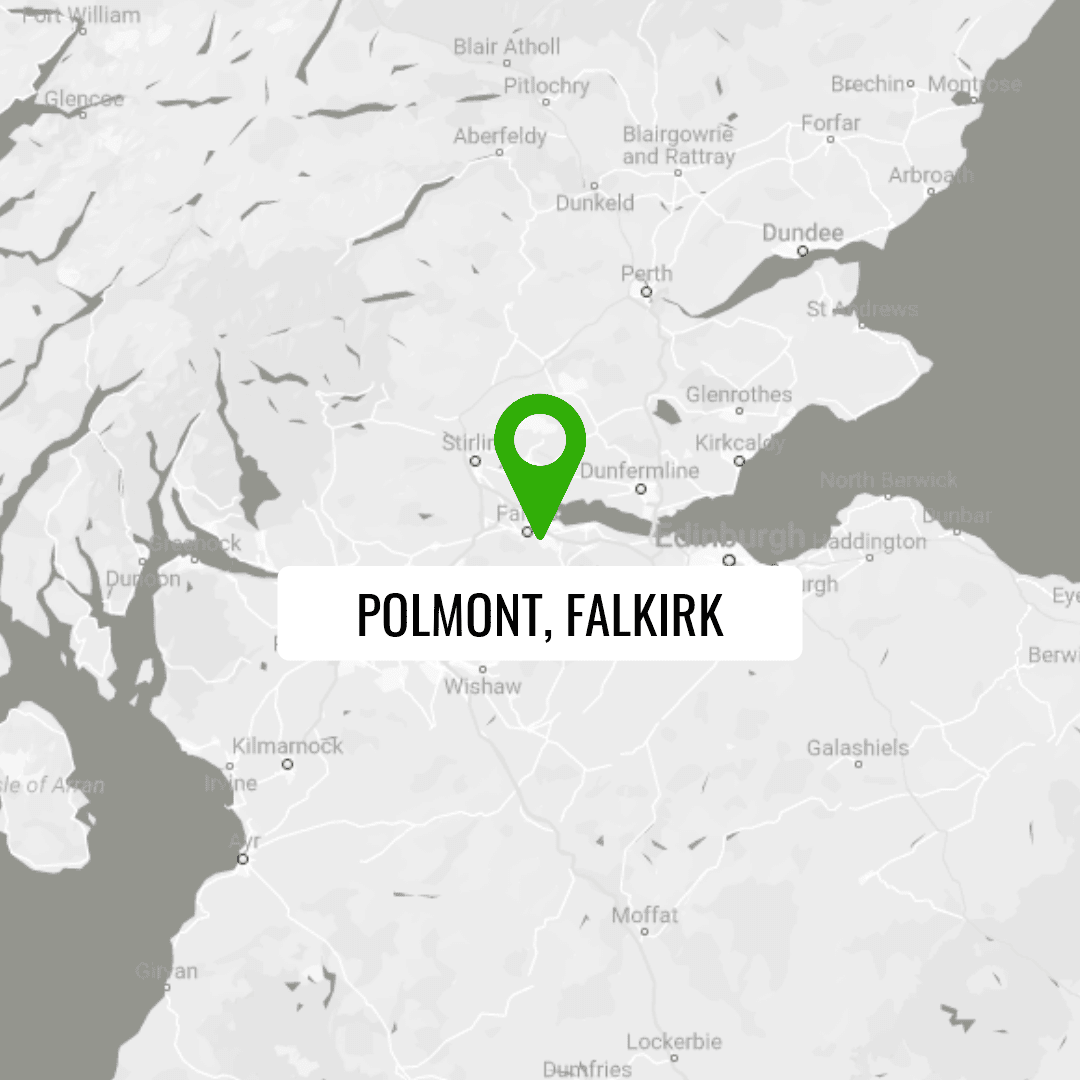Live project
Our work here has improved community access and enhanced biodiversity, whilst protecting a scheduled monument.
Phases 1-3
Work in Polmont Woods is now complete – bringing improved community access and enhanced biodiversity.
Green Action Trust has been working with Falkirk Council on long-term plans to manage and develop the Council’s woodland portfolio. Work has included community consultations and has been done in phases across seven sites.
The third and final phase of the work has focussed on Polmont Woods. Management works here, including tree thinning and rhododendron control, took place in 2024, and in 2025 the path network has been improved. Funding for this phase totalled some £205,000. See below for more on the challenges of incorporating the protection of a scheduled monument in the plans.
Phases 1 & 2 were completed in 2022 and 2023 at other Council woodlands in the Polmont area. Trees were planted, invasive species removed, and habitats restored. Funding of more than £315,000 came from Falkirk Council, the Nature Restoration Fund, Scottish Forestry Woodland Improvement Grants, developer contributions and EB Scotland. Access has been improved through upgrading paths and installing signage and seating across the seven sites.

Aims & objectives
The project aims to deliver multiple outcomes, across these key areas:

Through a mix of height reduction and removal of dangerous trees; tree thinning and new native woodland planting.
Improvements made include new path links through the woods; resurfacing of existing paths; new signage and seating.

Native habitats are being restored through removal of non-native plant species and planting of new native woodlands.
Part of the improved path intersects the Antonine Wall, which is a UNESCO World Heritage Site. We required permission from Historic Environment Scotland and had an archaeologist on site to make sure the wall wasn’t damaged.
We designed the path to go up and over the wall. At one point there are 110 steps. We ensured there was limited excavation to prevent damage – the completed path sits proud of the ground.
Across Polmont Woods, drainage has been improved, new handrails and fences installed, and vegetation cleared from the edges of the upgraded and resurfaced paths. Route markers have been installed and new interpretation boards tell walkers about the Wall.
Woodland management works such as tree thinning will, for example, let more light through to the ground layer and help remaining trees grow to maturity.